The rich and captivating world of Roman mythology has had a profound impact on art and literature throughout history. From the intricate sculptures and paintings of ancient times to the grand architectural designs influenced by mythological tales, the influence of Roman mythology can be seen in various artistic expressions. In classical literature, mythological heroes and tragic themes have provided endless inspiration for epic tales and powerful tragedies. The Renaissance and Neoclassical periods witnessed a revival of Roman mythological themes, with artists and writers using ancient stories to create timeless masterpieces. Even in the modern era, Roman mythology continues to captivate audiences through contemporary art, literature, and popular culture. In this article, we will explore the fascinating and enduring influence of Roman mythology on art and literature, tracing its evolution from ancient times to the present day.
Contents
- 1. Roman Mythology in Ancient Art
- 2. Roman Mythology in Classical Literature
- 3. Renaissance and Neoclassical Revival
- 4. Modern Interpretations and Adaptations
- Conclusion
-
Frequently Asked Questions
- 1. What is Roman mythology?
- 2. How did Roman mythology influence ancient art?
- 3. What are some famous examples of Roman mythological sculptures?
- 4. How were mythological themes incorporated into mosaics and frescoes?
- 5. What architectural features were influenced by Roman mythology?
- 6. How did Roman mythology influence literature?
- 7. What is the significance of Ovid’s ‘Metamorphoses’ in Roman mythology?
- 8. How did the Renaissance revive Roman mythological themes?
- 9. How does Roman mythology continue to influence modern art and literature?
- 10. How has Roman mythology been portrayed in popular culture?
- References
-
Frequently Asked Questions
- 1. How did Roman mythology influence the art of ancient Rome?
- 2. Which mythological heroes were prominently featured in classical literature?
- 3. How did Roman mythology influence architectural design?
- 4. What was the role of mythological themes in Renaissance art?
- 5. How did Roman mythology influence Neoclassical literature?
- 6. What is the significance of Roman mythology in contemporary art?
- 7. How are Roman mythological elements incorporated into modern literature?
- 8. What is the role of Roman mythology in popular culture, specifically in film and television?
- 9. Are there any lesser-known mythological figures that influenced art and literature?
- 10. How did Roman mythology contribute to the development of symbolism in art and literature?
- References
- Read More
1. Roman Mythology in Ancient Art
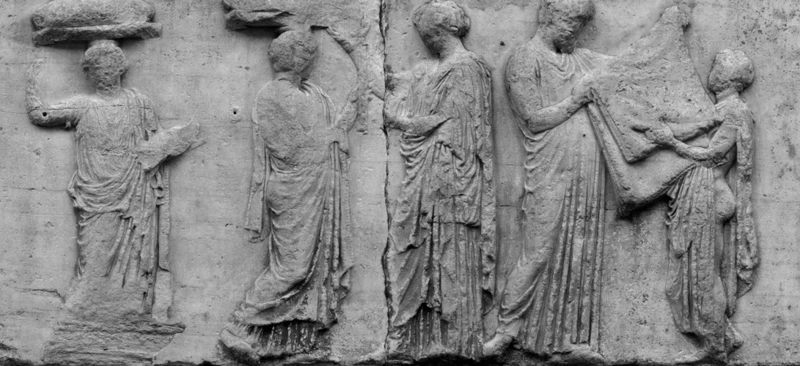
Ancient art, particularly in the form of sculpture and paintings, often featured depictions of Greek and Roman mythological figures. These artistic representations served as visual narratives of the mythological tales that were an integral part of Roman culture. In sculpture, artists skillfully carved life-like statues of gods, goddesses, heroes, and mythical creatures, showcasing their strength and beauty. One notable example is the Statue of Apollo Belvedere, which depicts the Greek god Apollo in a pose conveying both power and grace.
In paintings, frescoes and murals adorned the walls of temples, villas, and public spaces, depicting scenes from Roman mythology. These artworks often portrayed the gods engaging in epic battles, engaging in love affairs, or intervening in mortal affairs. The House of the Vettii in Pompeii is famous for its colorful frescoes depicting mythological scenes, such as the god Bacchus surrounded by nymphs and satyrs.
Mosaics and frescoes were another popular form of ancient art that showcased Roman mythology. These intricate works of art were created by arranging small colored tiles or painting directly on wet plaster. Mythological themes could be found in both domestic and public spaces, adding beauty and significance to everyday life. One famous example is the Alexander Mosaic found in the House of the Faun in Pompeii, which depicts the Battle of Issus between Alexander the Great and the Persian king Darius III. The use of mythology in these artworks not only conveyed artistic mastery but also highlighted Roman values and cultural ideals.
Roman mythology played a crucial role in shaping the architecture of ancient Rome. It inspired the design and decoration of temples, monuments, and public buildings, reflecting the Roman belief in the power and divinity of the gods. One key example is the Pantheon, a temple dedicated to all the Roman gods, which features a grand domed ceiling representing the heavens. The intricate reliefs and sculptures adorning the exterior and interior of these architectural marvels often depicted mythological scenes and figures, reinforcing the connection between the mortal and divine worlds.
1.1 Greek and Roman Mythological Figures in Sculpture and Paintings
The art of ancient Rome was heavily influenced by both Greek and Roman mythological figures. Sculpture and paintings were the primary mediums through which these mythological figures were depicted and immortalized. Roman artists skillfully crafted marble statues and reliefs that brought these gods, goddesses, and heroes to life. One such prominent figure in Roman mythology is Jupiter, the king of the gods, often depicted sitting on a throne with his thunderbolt in hand.
Other significant mythological figures, such as Venus, the goddess of love and beauty, and Mars, the god of war, were also commonly portrayed in sculptures and paintings. Venus was depicted as an ethereal figure, often with flowing hair and a serene expression, while Mars was shown as a powerful warrior with a fierce countenance and weapons of war.
The influence of Roman mythology can also be seen in the frescoes and mosaics that adorned the walls and floors of Roman villas, temples, and public spaces. These vibrant and intricate artworks depicted various mythological scenes, bringing the stories and characters to life. One example is the famous Dionysus mosaic found in Pompeii, showcasing the Greek god of wine and ecstasy surrounded by his entourage of followers, known as maenads.
These depictions of mythological figures in sculpture and paintings not only showcased the artistic talents of the Roman artists but also served as a reminder of the rich mythology that permeated Roman society. The visual representations of these mythological figures allowed the Romans to connect with and venerate their gods and heroes, keeping their stories alive for generations to come.
1.2 Mythological Themes in Mosaics and Frescoes
Mosaics and frescoes were popular mediums for depicting mythological themes in ancient Roman art. These intricate works showcased the skill and craftsmanship of Roman artists while simultaneously incorporating stories from mythology.
In mosaics, small colored tiles were meticulously arranged to form elaborate and detailed scenes. Mythological figures, such as gods, goddesses, and heroes, were commonly featured. Some of the most famous mosaic examples include the Dionysus mosaic from the House of the Faun in Pompeii, which depicts the Greek god of wine and revelry surrounded by various mythical creatures. The Chamber of Cupid and Psyche in the Villa of the Mysteries in Pompeii is another notable example, where the story of the forbidden love between the mortal Psyche and the god Cupid is depicted in a series of captivating and symbolic scenes.
Frescoes, on the other hand, were created by painting directly onto wet plaster, resulting in vibrant and long-lasting wall paintings. Roman frescoes often portrayed mythological narratives, bringing the ancient stories to life. The Villa of the Mysteries, mentioned earlier, is renowned for its vivid frescoes that depict the initiation rituals of a mythical cult, possibly related to the worship of the Greek god Dionysus. Other frescoes showcased mythological characters and events, such as the Wedding of Neptune and Amphitrite found in the House of the Vettii in Pompeii.
These mosaics and frescoes not only served as decorative elements but also had symbolic and cultural significance. They reinforced Roman beliefs in the importance of mythology, providing glimpses into the divine realms and immortalizing the powerful stories of gods and heroes.
1.3 The Influence of Roman Mythology on Architecture
The influence of Roman mythology on architecture was significant and can be seen in various structures of ancient Rome. One of the most striking examples of this influence is the Colosseum, a renowned amphitheater that served as a venue for gladiatorial contests and other spectacles. The architecture of the Colosseum was inspired by the grandeur and magnificence associated with Roman mythology. Its massive size and impressive design, including arches and columns, aimed to evoke the power and might of the gods.
Another example is the Temple of Vesta, dedicated to the goddess of the hearth. The circular shape of the temple, known as a tholos, was a symbolic representation of the earth and the divine power it encompassed. The use of columns, friezes, and sculptural elements in the temple’s design further emphasized the connection between Roman mythology and architecture.
Additionally, Roman mythology influenced the construction of triumphal arches, such as the Arch of Constantine. These arches were erected to commemorate military victories and were adorned with intricate reliefs depicting mythological scenes. The reliefs served as a visual narrative of Roman history and the divine favor bestowed upon the Empire.
Roman mythology also influenced the layout of cities and urban planning. For example, the Forum of Trajan, a vast complex of buildings, included a column dedicated to the emperor Trajan. The column depicted scenes of Trajan’s military campaigns, with divine figures and mythological elements interspersed throughout, showcasing the connection between the emperor’s achievements and the blessings of the gods.
The influence of Roman mythology on architecture extended beyond ancient times and continued to inspire architectural styles throughout history. Even in modern times, elements of Roman mythology can be seen in buildings and structures around the world, symbolizing the enduring legacy of this captivating mythology.
2. Roman Mythology in Classical Literature
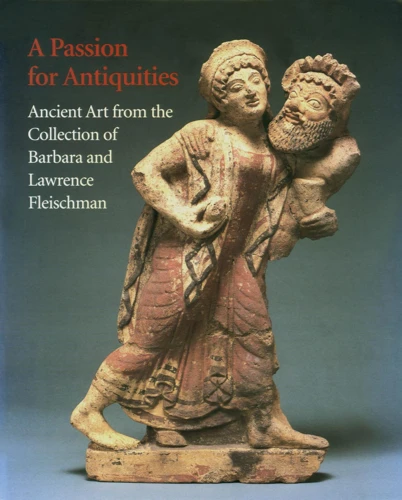
Classical literature of ancient Rome was heavily influenced by Roman mythology, incorporating mythological heroes, tragic themes, and divine interventions into its storytelling. Epics and legends, such as the famous Aeneid by Virgil, celebrated the epic journey of Aeneas, a Trojan hero and son of Venus, who played a vital role in the founding of Rome. The heroic exploits of Aeneas became a source of inspiration for Roman patriotism and national identity.
Tragedies, too, drew upon Roman mythology to explore profound human emotions and moral dilemmas. One notable example is Seneca the Younger’s play “Phaedra,” which tells the tragic story of a queen consumed by her forbidden love for her stepson, an ancient tale rooted in Greek mythology. These mythological themes provided a platform for playwrights to examine complex human nature and societal issues.
Ovid’s “Metamorphoses” stands as a significant work in Roman literature, blending mythology with poetic storytelling. This masterpiece chronicles the creation of the world and the various transformations of gods, heroes, and mortal beings. Ovid’s vivid descriptions and engaging narratives captivated readers, making “Metamorphoses” a treasure trove of Roman mythology and a source of inspiration for generations of writers.
2.1 Epics and Legends: The Role of Mythological Heroes
In classical literature, Roman mythology played a significant role, particularly in epics and legends. These epic poems and stories often revolved around mythological heroes who showcased bravery, strength, and virtue. One notable example is the epic poem “The Aeneid” by Virgil. This influential work tells the tale of Aeneas, a hero who survived the fall of Troy and went on to found the city of Rome. Throughout his journey, Aeneas encounters various mythological figures, such as the goddess Venus and the sorceress Circe.
Another legendary hero from Roman mythology is Hercules. His tales were popularized in various works of literature, including the “Hercules Furens” by Seneca. This tragedy explores the complex character of Hercules, his divine parentage, and his Twelve Labors. These Labors, such as slaying the Nemean lion and capturing the Golden Hind, showcased Hercules’ exceptional strength and courage.
Mythological heroes were not only the protagonists of ancient epics but also served as symbols of Roman values and ideals. They embodied qualities that the Romans admired, such as honor, loyalty, and determination. These heroes often faced incredible challenges and overcame them through their wit, strength, or divine assistance, inspiring readers to strive for greatness in their own lives.
2.2 Tragedies and Mythological Themes
Tragedies in classical literature often drew upon mythological themes, exploring the complexities of human nature and the consequences of actions. Playwrights such as Euripides and Seneca used Roman mythology as a backdrop to tell powerful and thought-provoking stories. These tragedies delved into the struggles of mythological heroes, the wrath of the gods, and the fatal flaws of mortals.
In Euripides’ tragedy ‘Medea’, the play centers around the protagonist Medea, a woman with magical powers and a tragic fate. The story draws upon the myth of Jason and the Argonauts, exploring themes of betrayal, revenge, and the destructive power of love. Medea’s descent into darkness and her vengeful actions serve as a cautionary tale about the consequences of unchecked passions and the tragic outcomes of human decisions.
Similarly, Seneca’s ‘Phaedra’ tells the story of the mythological character Phaedra, the wife of Theseus, and her forbidden love for her stepson Hippolytus. The play delves into themes of desire, guilt, and the destructive nature of illicit passions. Phaedra’s internal struggle and the tragic consequences of her actions highlight the timeless human struggle between reason and emotion.
Tragedies rooted in Roman mythology offered audiences a cathartic experience, allowing them to confront their fears, reflect on the human condition, and contemplate the forces that shape their lives. These works of literature continue to resonate with audiences today, reminding us of the timeless nature of human flaws and the consequences of hubris.
2.3 Roman Mythology in Ovid’s ‘Metamorphoses’
Ovid’s ‘Metamorphoses’ is a renowned work of literature that extensively incorporates elements of Roman mythology. This epic poem consists of fifteen books and explores the theme of transformation through various mythological narratives. Each book tells a different story, intertwining myths of gods, goddesses, and mortal beings. One of the most well-known tales from ‘Metamorphoses’ is the story of Pyramus and Thisbe, which serves as the inspiration behind Shakespeare’s ‘Romeo and Juliet’.
In ‘Metamorphoses’, Ovid showcases the power of the gods, the complexities of human emotions, and the consequences of divine interventions. The poem features a wide range of mythological characters, including Jupiter, Apollo, Venus, Cupid, and many others. Ovid skillfully weaves these characters into intricate stories of love, desire, revenge, and tragedy. The poem also delves into the concept of transformation and metamorphosis, with many characters changing their forms as a result of divine or mortal interactions.
The influence of Roman mythology on ‘Metamorphoses’ extends beyond its themes and characters. Ovid’s vivid descriptions and poetic language bring the mythological world to life, allowing readers to immerse themselves in the fantastical realm of gods and mortals. The poem serves as a testament to the enduring power and impact of Roman mythology on literature, and it continues to be studied and celebrated for its artistic merit and storytelling prowess.
3. Renaissance and Neoclassical Revival
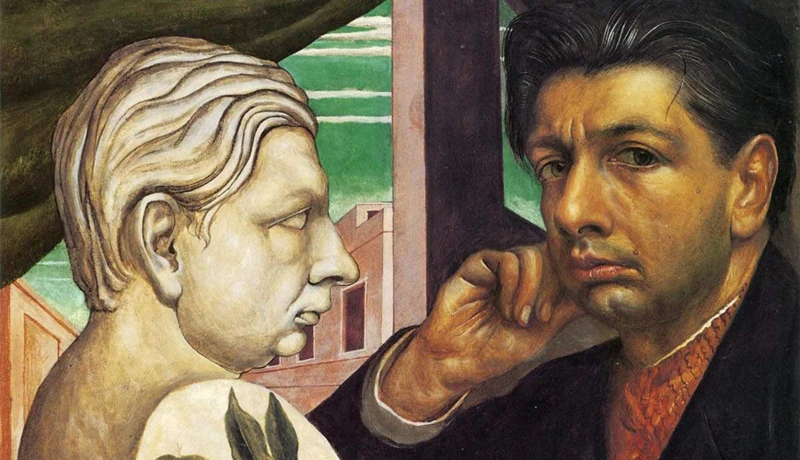
The Renaissance period witnessed a resurgence of interest in the art and culture of ancient Rome, including its mythology. Artists drew inspiration from Roman mythology, creating paintings and sculptures that depicted mythological figures and scenes. The works of renowned artists such as Sandro Botticelli and Michelangelo showcased their deep knowledge and appreciation of Roman mythology.
Botticelli’s masterpiece, The Birth of Venus, portrays the Roman goddess of love emerging from the sea. The painting captures the beauty and ethereal quality often associated with the divine, reflecting the influence of Roman mythology on Renaissance art. Similarly, Michelangelo’s iconic sculpture, David, embodies the ideals of heroism and strength, drawing from the mythological tales of ancient Rome.
The Neoclassical period, which emerged in the 18th century, was characterized by a revival of classical art and literature. Writers of this era often incorporated mythological themes and motifs into their works as a way to evoke the grandeur and ideals of ancient Rome.
One notable example is John Milton’s epic poem, Paradise Lost, which draws heavily from Roman mythology, particularly the story of the fall of Satan and his rebellion against God. The epic showcases the struggles between good and evil, mirroring the epic battles between gods and heroes found in Roman myths.
Another influential work is Johann Wolfgang von Goethe’s play, Faust. The play explores themes of ambition and temptation, following the journey of the titular character who makes a pact with the devil. Goethe’s incorporation of mythological elements, such as the character of Mephistopheles, adds depth and complexity to the narrative while paying homage to the classical traditions of ancient Rome.
3.1 Mythological Paintings and Sculptures during the Renaissance
During the Renaissance, there was a significant revival of interest in Roman mythology, which influenced the creation of numerous paintings and sculptures. Artists of this period drew inspiration from ancient Roman texts and artifacts, reimagining mythological themes in their artworks. One famous example is Sandro Botticelli’s The Birth of Venus, which depicts the Roman goddess of love emerging from the sea. This painting captures the idealized beauty and grace associated with Roman mythology. Another renowned work is Michelangelo’s David, a sculpture that represents the biblical figure but displays characteristics reminiscent of ancient Roman statues. Through these mythological paintings and sculptures, artists sought to connect with the classical past, infusing their works with a sense of humanism and a fascination with the myths and legends of ancient Rome. The influence of Roman mythology during the Renaissance can also be seen in the decorative arts, with mythological motifs appearing in tapestries, furniture, and ceramics, further emphasizing the enduring impact of these stories on artistic expression.
3.2 Mythological Themes of Neoclassical Literature
Neoclassical literature of the Renaissance period drew heavily on mythological themes, incorporating ancient Roman myths into their works. These literary works aimed to revive the spirit of classical antiquity and celebrate the ideals of beauty, reason, and order. Writers of this era, such as Alexander Pope and John Milton, explored mythological themes to convey profound philosophical and moral ideas.
One prominent example of mythological themes in neoclassical literature is Milton’s epic poem “Paradise Lost”. In this masterpiece, Milton draws on Roman mythology to tell the story of the fall of Adam and Eve, showcasing the struggles between good and evil, human ambition, and the consequences of disobedience. The characters of Lucifer, the fallen angel, and Satan, epitomize the tragic heroes of Greek and Roman mythology, embodying themes of pride, rebellion, and ultimate downfall.
Another famous work influenced by Roman mythology is “The Rape of the Lock” by Alexander Pope. This mock-heroic poem satirizes the social customs of the time through the story of a young lady whose lock of hair is cut off. Pope weaves in mythological references and characters, such as Demeter, the goddess of fertility, and Hermes, the messenger god, to add depth and humor to the narrative. Through these mythological allusions, the poem explores themes of vanity, social class, and the triviality of human affairs.
Neoclassical literature also reintroduced the use of pastoral poetry, which often drew on Roman mythological themes. The works of Virgil, such as “Eclogues” and “Georgics”, were highly regarded and imitated by neoclassical poets. These pastoral poems celebrated the simplicity of rural life and often featured mythical characters like nymphs and satyrs. The use of Roman mythology in neoclassical literature, with its emphasis on order, reason, and idealized beauty, reflected the aesthetic principles of the period.
4. Modern Interpretations and Adaptations
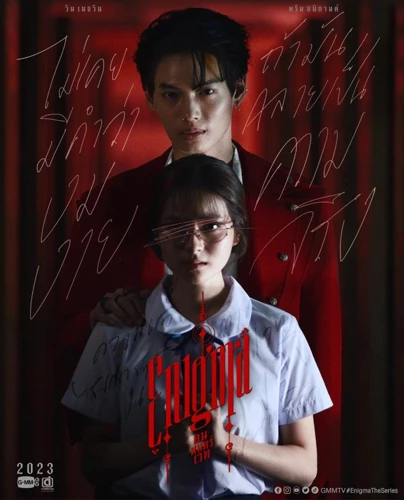
In modern times, Roman mythology continues to inspire and captivate artists and writers, resulting in a plethora of interpretations and adaptations in various forms of art and literature.
Contemporary artists often draw on the rich symbolism and narratives of Roman mythology to create thought-provoking and visually stunning artworks. These artists use a variety of mediums, such as painting, sculpture, and mixed media, to explore timeless themes and reimagine ancient tales. One prominent example is the work of artist Anish Kapoor, whose installation artwork “Marsyas” echoes the myth of the satyr Marsyas and his musical contest with the god Apollo. The sculpture references both the ancient tale and the enduring human desire for artistic expression.
In modern literature, writers continue to weave Roman mythological elements into their narratives, creating compelling stories that resonate with contemporary audiences. The mythological figures and themes provide a rich backdrop for exploring universal human experiences and dilemmas. Authors like Rick Riordan incorporate Roman mythology in their young adult novels, introducing readers to a new generation of heroes and gods. Riordan’s “Percy Jackson and the Olympians” series features a blend of Greek and Roman mythology, offering a fresh take on ancient tales.
Roman mythology has not gone unnoticed in popular culture, particularly in the realms of film and television. Filmmakers and TV show creators often incorporate elements of Roman mythology to add depth and intrigue to their stories. One notable example is the epic historical drama series “Rome”, which depicts the rise and fall of the Roman Empire. The show weaves together historical events with mythological elements, showcasing the impact of the gods and goddesses on the lives of mortals.
The enduring influence of Roman mythology on art and literature is a testament to its timeless appeal and universal themes. From contemporary art to modern adaptations, Roman mythology continues to inspire and captivate audiences, showcasing its enduring power and relevance.
4.1 Roman Mythology in Contemporary Art
In contemporary art, Roman mythology continues to serve as a source of inspiration for many artists. The timeless stories and iconic characters from Roman mythology provide a rich tapestry for artists to explore and reinterpret in their works. Mythological themes are often incorporated into various mediums, including paintings, sculptures, and mixed media installations.
One prominent artist who incorporates Roman mythology into their work is Jeff Koons. He is known for his sculptures that blur the boundaries between high and low culture, and often feature mythological figures. One of his famous works is the Balloon Venus, a larger-than-life sculpture made of highly polished stainless steel, which references the Roman goddess of love and beauty, Venus.
Another artist who draws inspiration from Roman mythology is Yinka Shonibare. Shonibare is known for his exploration of cultural identity and colonialism through the use of African textiles. In his work titled “Medusa”, he appropriates the mythological figure of Medusa as a symbol of power and resistance, challenging traditional Western narratives.
Roman mythology is also prevalent in contemporary fantasy and science fiction art. Many artists in these genres incorporate elements of Roman mythology in their illustrations and concept art, creating imaginative worlds that blend ancient myths with futuristic elements. This fusion of the old and the new allows artists to explore universal themes and provoke thought about the human condition.
Roman mythology continues to leave its mark on contemporary art, offering artists a rich source of inspiration and a means to explore timeless themes of power, love, and the human experience.
4.2 Roman Mythological Elements in Modern Literature
In modern literature, the influence of Roman mythology can be found in various works, where authors incorporate Roman mythological elements to add depth and symbolism to their narratives. Many authors draw inspiration from the rich mythology to create compelling stories that resonate with readers.
One notable example is Rick Riordan’s popular series, “Percy Jackson & the Olympians,” which follows the adventures of a demigod named Percy Jackson. Riordan seamlessly weaves Roman mythology into his storytelling, introducing readers to gods, goddesses, and mythical creatures from ancient Rome. By incorporating Roman mythological elements, Riordan not only introduces readers to these captivating tales but also explores themes of heroism, friendship, and personal growth.
Another modern literary work that incorporates Roman mythology is Neil Gaiman’s “American Gods.” The novel follows protagonist Shadow Moon as he navigates a world where ancient gods exist alongside modern deities. Gaiman incorporates Roman gods, such as Jupiter and Vulcan, into his narrative, using them to explore themes of belief, power, and the clash of old and new. The presence of Roman mythological elements adds an enchanting and thought-provoking layer to the story.
The influence of Roman mythology can be seen in young adult fiction, such as Suzanne Collins’ “The Hunger Games” trilogy. The government in the fictional world of Panem is structured around districts named after Roman numerals, reminiscent of the Roman empire. This incorporation of Roman elements serves to emphasize the control and oppression of the ruling Capitol over the districts. The use of Roman mythology enhances the dystopian setting and creates a sense of familiarity and intrigue for readers.
Modern literature continues to draw from Roman mythology, using its timeless characters, themes, and symbolism to create engaging and impactful stories that resonate with readers of all ages.
4.3 Roman Mythology in Popular Culture: Film and Television
Roman mythology has not only left its mark on ancient art and literature but has also found its way into popular culture, particularly through film and television. This modern medium has provided a platform for the retelling and reimagining of classic mythological tales, captivating audiences around the world.
In the realm of film, there have been numerous adaptations of Roman mythology that have garnered both critical acclaim and commercial success. Gladiator (2000), directed by Ridley Scott, brought the world of ancient Rome to life, showcasing the legendary figure of Maximus Decimus Meridius as he seeks revenge in the gladiatorial arena. This epic film not only presents the grandeur of ancient Rome but also explores themes of honor, loyalty, and the corrupting influence of power.
Television series have also embraced Roman mythology, creating immersive worlds that transport viewers back in time. One such example is the highly popular series “Spartacus: Blood and Sand” (2010-2013), which follows the story of Spartacus, a gladiator who leads a rebellion against the Roman Republic. This series delves into the brutalities of the Roman arena and explores the complexities of power dynamics and social hierarchy.
The influence of Roman mythology can be seen in contemporary animated films. Disney’s “Hercules” (1997) modernizes the myth of Hercules, son of Zeus, in a colorful and musical extravaganza. This family-friendly film introduces younger audiences to the captivating world of Roman mythology in an accessible and entertaining way.
While these interpretations of Roman mythology may take creative liberties, they continue to spark interest and intrigue in the ancient tales that have stood the test of time. Through film and television, the stories of gods, heroes, and mythical creatures find a new audience, ensuring that the influence of Roman mythology remains alive and relevant in popular culture.
Conclusion
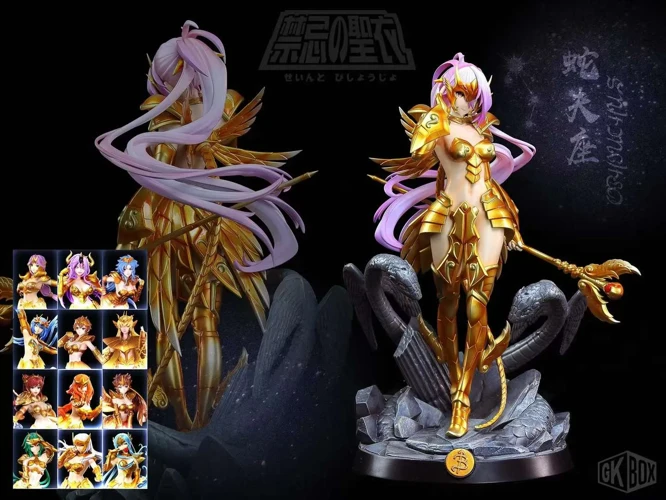
- Throughout history, Roman mythology has profoundly influenced art and literature, leaving an indelible mark on human culture.
- In ancient art, Roman mythology was depicted through sculptures, paintings, mosaics, and frescoes, showcasing the gods, heroes, and mythical creatures of their belief system.
- The intricate details and lifelike representations in sculptures, such as the Statue of Apollo Belvedere, brought the mythological figures to life.
- Frescoes and murals, like those found in the House of the Vettii, told stories of gods and showcased their influence on mortal lives.
- Mosaics, such as the Alexander Mosaic, captured mythological scenes in colorful and intricate detail.
- In architecture, the influence of Roman mythology was evident in the design of temples, monuments, and public buildings, with reliefs and sculptures depicting mythological figures and scenes.
- The Pantheon is an extraordinary example of ancient Roman architecture that reflects the importance of mythology in the culture.
From classical literature like Ovid’s ‘Metamorphoses’ to the Renaissance and Neoclassical revivals, Roman mythology continued to inspire writers, painters, and sculptors.
Even in modern times, the impact of Roman mythology can be seen in contemporary art, literature, and popular culture, showcasing its enduring influence.
In conclusion, the influence of Roman mythology on art and literature is a testament to its timeless appeal and the power of storytelling. The myths and legends of ancient Rome have provided endless inspiration for artistic expression, allowing us to delve into a world of gods, heroes, and epic tales. The rich tapestry of mythological themes continues to captivate audiences, reminding us of our shared human heritage and the enduring power of ancient stories.
Frequently Asked Questions

1. What is Roman mythology?
Roman mythology refers to the collection of myths and legends that were believed and told by the ancient Romans. These myths revolve around the gods, goddesses, heroes, and mythical creatures that played significant roles in Roman culture and society.
2. How did Roman mythology influence ancient art?
Roman mythology had a profound influence on ancient art, with sculptures, paintings, mosaics, and frescoes often featuring mythological themes and figures. Artists used these depictions to showcase the power, beauty, and narratives of the gods and mythical characters.
3. What are some famous examples of Roman mythological sculptures?
One famous example is the Statue of Apollo Belvedere, which depicts the Greek god Apollo in a powerful and graceful pose. Another notable sculpture is the Laocoön and His Sons, which portrays the tragic tale of the Trojan priest Laocoön and his sons attacked by sea serpents.
4. How were mythological themes incorporated into mosaics and frescoes?
Mosaics and frescoes depicted scenes from Roman mythology by arranging small colored tiles or painting on wet plaster. These intricate artworks showcased mythological stories and characters, often adorning the walls of temples, villas, and public spaces.
5. What architectural features were influenced by Roman mythology?
Architectural structures such as the Pantheon featured reliefs and sculptures depicting mythological scenes and figures. The grand designs and intricate decorations of temples, monuments, and public buildings were inspired by the belief in the gods’ power and divinity.
6. How did Roman mythology influence literature?
Roman mythology provided a rich source of inspiration for classical literature. Mythological heroes, divine interventions, and tragic themes were prominent in epics, legends, and tragedies, creating captivating narratives that explored the human condition and moral values.
7. What is the significance of Ovid’s ‘Metamorphoses’ in Roman mythology?
Ovid’s ‘Metamorphoses’ is a seminal work of Roman literature that explores the theme of transformation through mythological tales. It weaves together various myths and showcases the influence and impact of Roman mythology on storytelling.
8. How did the Renaissance revive Roman mythological themes?
The Renaissance period saw a renewed interest in ancient Roman culture and mythology. Artists during this time drew inspiration from Roman mythological stories, creating paintings and sculptures that celebrated the beauty, harmony, and idealized human forms found in ancient Roman art.
9. How does Roman mythology continue to influence modern art and literature?
Contemporary artists and writers often incorporate Roman mythological elements in their works, either as direct references or in reinterpretation. This allows for the exploration of timeless themes and the connection between the past and the present.
10. How has Roman mythology been portrayed in popular culture?
Roman mythology has made its way into popular culture through films, television shows, and even video games. Characters such as Hercules or Medusa, as well as iconic myths like the story of Romulus and Remus, have been adapted and reimagined, introducing these ancient tales to modern audiences.
References
- Traces of Ancient Rome in the Modern World
- How Did Mythology Influence Roman Mythology
- Influence of Romans and Greeks on Western literature
Frequently Asked Questions

1. How did Roman mythology influence the art of ancient Rome?
Roman mythology played a significant role in shaping the art of ancient Rome. It inspired countless sculptures and paintings, with Greek and Roman mythological figures often depicted in intricate detail. These mythical themes were also prevalent in the mosaics and frescoes of the time, adding a touch of divine inspiration to the visual arts.
2. Which mythological heroes were prominently featured in classical literature?
Classical literature often revolved around the tales of prominent mythological heroes. Characters such as Hercules, Achilles, and Odysseus captivated readers with their extraordinary feats and epic adventures. These heroes embodied the virtues and ideals that the Romans held dear.
3. How did Roman mythology influence architectural design?
The influence of Roman mythology can be seen in the architectural design of ancient Rome. Temples, amphitheaters, and public buildings often featured elaborate sculptures and reliefs depicting mythological scenes. These grand structures served as a constant reminder of the gods and their stories, reinforcing the importance of mythology in Roman society.
4. What was the role of mythological themes in Renaissance art?
During the Renaissance, artists drew inspiration from Roman mythology to create awe-inspiring paintings and sculptures. Mythological themes allowed artists to explore human emotions, depict divine beauty, and convey moral messages. The reinterpretation of classical mythology in this period marked a revival of interest in the ancient world.
5. How did Roman mythology influence Neoclassical literature?
Roman mythology had a profound impact on Neoclassical literature, which sought to emulate the values and aesthetics of ancient Rome and Greece. Writers drew inspiration from mythological stories, using them as allegories to explore human nature, societal issues, and the human condition. These works often displayed a reverence for classical ideals and a desire to revive the spirit of antiquity.
6. What is the significance of Roman mythology in contemporary art?
Contemporary artists continue to draw inspiration from Roman mythology, creating artworks that explore timeless themes such as love, power, and mortality. Roman mythology provides a rich source of symbols, archetypes, and narratives that artists can tap into to convey their artistic visions and comment on the human experience.
7. How are Roman mythological elements incorporated into modern literature?
Roman mythological elements can be found in modern literature through various means, such as the reinterpretation of ancient stories, the creation of new mythologies, and the integration of mythological motifs into contemporary narratives. These elements add depth and symbolism to modern literary works, connecting them to a rich cultural heritage.
8. What is the role of Roman mythology in popular culture, specifically in film and television?
Roman mythology has a strong presence in popular culture, particularly in film and television. Many movies and TV shows draw inspiration from Roman mythological stories and characters, bringing them to life on the screen. These adaptations help to keep the mythology alive and accessible to a wide audience.
9. Are there any lesser-known mythological figures that influenced art and literature?
While figures like Jupiter, Venus, and Mars often take the spotlight, there are indeed lesser-known mythological figures that have influenced art and literature. For example, Psyche, Cupid’s mortal lover, has been the subject of various artistic interpretations. The inclusion of these lesser-known figures adds diversity and depth to the artistic and literary world.
10. How did Roman mythology contribute to the development of symbolism in art and literature?
Roman mythology played a vital role in the development of symbolism in art and literature. The gods, goddesses, and mythical creatures provided artists and writers with a shared visual language and a set of archetypal symbols. These symbols allowed for layered meanings, allegories, and hidden messages that added richness and complexity to artistic and literary works.
References
- Traces of Ancient Rome in the Modern World
- How did Greek and Roman mythology influence art, …
- 1.7: Roman Art and Literature | HUM 140: Introduction to …







